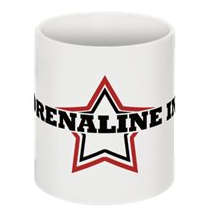Q.1. In what ways does your media product use, develop or challenge forms and conventions of real media products?
Our music video which we have produced shows many conventions in which our product can be related to real music videos. The genre of the music we used was indie, therefore we researched the genre making sure that our music video looked to the best standard possible as a real music video. As we had found out that most indie bands show the artists performing their song, we realised that this relates to Andrew Goodwin’s theory of performance and narrative. We asked people on a survey which they preferred (narrative or performance) with the majority liking either performance or both. We therefore thought it would be best to show a narrative and performance in our music video. This would show the audience that we had acknowledged the survey as well as using Goodwin’s beliefs in what should be in a music video.
Andrew Goodwin also identified how thought beats, help the audience see the sound. We have attempted this in our music video as we felt that it would be challenging for us to create as the song we chose (‘apply some pressure’ by Maximo Park) had a fast tempo, however we understood that the effect would be rewarding as it would look more similar to a professional music video. We feel that the thought beats compliment the lyrics as throughout the pressure is built up as the thought beats become more stronger.
The star image that Andrew Goodwin believes that every music video should have, is shown through the singer’s performance. As the song is about pressure we decided to make the singer look like he is fidgeting. This happens in the original music video of ‘Apply Some Pressure’ by Maximo Park. Once we had looked into this we tried to make the fidgeting seem more out of control. We then found a mutual artist, Jake Morley, who used a technique that involved playing the music video in double speed. We then added this type of effect by speeding the video up in certain areas in which the artist was singing on his own. We feel that by doing this technique as well as fidgeting would give the impression of the artist under pressure and that he has reached the limit. Richard Dyer’s theory helps support our music video as we have constructed the lead singer to perform in a certain way. We also feel that as looking at White’s theory, we think that we are the gatekeepers within this production.
According to Goodwin’s research of the visuals of a music video. We feel that our music video seems to show signs of illustrated visuals as at the beginning the lyrics mention ‘inside my head, were things I’d never thought about’. This is then shown through the video as the singer points to his head and gives the impression that it is out of control.Theorist Carol Vernallis also thinks that the visuals within the video should illustrate the lyrics. Our music video also shows signs of disconjunctured visuals. As the artist performs with his band, the lyrics say, ‘you know that I, would like to see you undress’. Vernallis mentions that the music video may bring questions to the end of the video, however they may not be answered. Our music video supports this theory as our music videos triggers a lot of questions such as, ‘Why is the lead singer feeling under pressure?’ ‘Why are the pan and match related in this way?’.
We agree with Goodwin’s theory that the technical aspects hold the music video together and help the fluent course of the video. We have added jump cuts and have used different shots (ie.meat shot) during a short and fast period of time, giving our music video more tension and pressure towards the end.
























